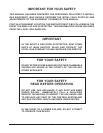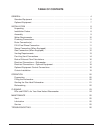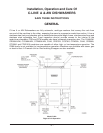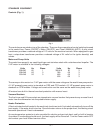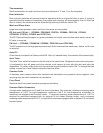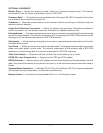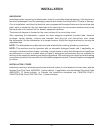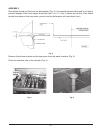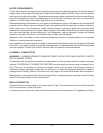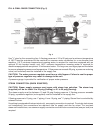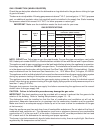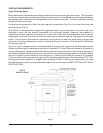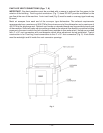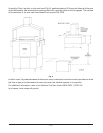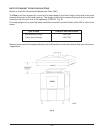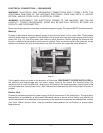
– 10 –
WATER REQUIREMENTS
Proper water quality can improve ware washing performance by reducing spotting, lowering chemical
supply costs, enhancing effectiveness of labor and extending equipment life. Local water conditions
vary from one location to another. The recommended proper water treatment for effective and efficient
use of this equipment will also vary depending on the local water conditions. Ask your municipal water
supplier for details about local water specifics prior to installation.
Recommended water hardness is 4 to 6 grains of hardness per gallon. Chlorides must not exceed 50
parts per million. Water hardness above 6 grains per gallon should be treated by a water conditioner
(water softener or in-line treatment). Water hardness below 4 grains per gallon also requires water
treatment to reduce potential corrosion. Water treatment has been shown to reduce costs associated
with machine cleaning, reduce deliming of the dishwasher, reduce detergent usage and reduce
corrosion of metallic surfaces in the booster water heater and dishwasher.
Sediment, silica, chlorides or other dissolved solids may lead to a recommendation for particulate
filtration or reverse osmosis treatment.
If an inspection of the dishwasher or booster heater reveals lime buildup after the equipment has been
in service, in-line water treatment should be considered and, if recommended, should be installed and
used as directed. Contact your Hobart Service office for specific recommendations.
PLUMBING CONNECTIONS
WARNING: PLUMBING CONNECTIONS MUST COMPLY WITH APPLICABLE SANITARY, SAFETY
AND PLUMBING CODES.
The plumber who connects this machine is responsible for making certain that both water and steam
lines are THOROUGHLY FLUSHED OUT BEFORE connecting to any manual valve or solenoid valve.
This ‘‘flush-out’’ is necessary to remove all foreign matter, such as chips (resulting from cutting or
threading of pipes), pipe joint compound from the lines or, if soldered fittings are used, bits of solder or
cuttings from the tubing. Debris, if not removed, may lodge in the valves and render them inoperative.
Manual valves or solenoid valves fouled by foreign matter, and any expenses resulting from this fouling,
are NOT the responsibility of the manufacturer.
DRAIN CONNECTION
Connect the drain through a trap to the sewer using 2" pipe. The common drain for the tank(s) requires
only one connection to the floor drain.
If a grease trap is required by code, it should have a minimum flow capacity of 31 gallons per minute.



